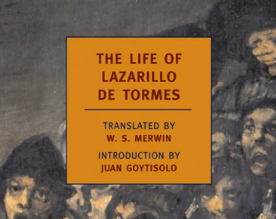Introduction
byIntroduction to Lazarillo of Tormes reveals not a story of grand knights or epic battles, but one grounded in the grit of everyday survival. Unlike the noble heroes populating Spain’s popular literature of the sixteenth century, Lazarillo is poor, cunning, and painfully aware of the world’s hypocrisies. His journey begins not with a sword, but with an empty stomach and an endless capacity for adaptation. The novel stood out sharply in its time, eschewing fantasy for realism and replacing idealized virtue with sharp social critique. Readers were drawn to its honesty and wit, as well as its ability to expose the rot beneath polished surfaces. From its first printing in 1554, it spread quickly across Europe, translated into other languages and adapted to fit the needs of new audiences, even as authorities trimmed it to blunt its criticism. Despite censorship, its voice endured, subversive and bold.
The author of Lazarillo of Tormes remains unknown, though the search for his identity has produced a colorful range of candidates. Diego Hurtado de Mendoza is often named as the likely author, but others have suggested Juan de Ortega, Sebastián de Horozco, or an anonymous voice shaped by persecution or reformist ideals. Clues within the text suggest the possibility of a converso—a Jewish convert to Christianity—or someone influenced by Erasmian thought, critical of the Church yet cautiously veiled in irony. Regardless of authorship, the mind behind Lazarillo crafted a voice that resonated far beyond the book’s immediate context. The layered critique of religious corruption, economic disparity, and social ambition spoke to the contradictions of a society that claimed moral order but tolerated systemic injustice. Each chapter illustrates not just a stage in Lazarillo’s life, but a mirror held up to sixteenth-century Spain.
The protagonist’s name draws direct association with the biblical Lazarus—a man raised from the dead—a fitting parallel for a character repeatedly cast out and forced to reinvent himself. This connection deepens the text’s exploration of endurance and rebirth in a world that offers little mercy. Just as biblical Lazarus emerges from the tomb, our Lazarillo crawls from one exploit to another, learning to survive not by miracles, but through sharp observation and flexible morality. Folk traditions and parables filter through the narrative, enriching the scenes with symbolic echoes. The structure, though episodic, forms a tightly woven thread of cause and consequence. Lazarillo’s voice, at once ironic and sincere, links each encounter into a larger commentary on power, poverty, and illusion.
Spain in the 1500s was in flux—its economy stretched by war and empire, its population crushed beneath inflation and rigid class divisions. Lazarillo of Tormes does not simply depict this; it interrogates it. Priests, nobles, and scholars parade through the story not as paragons of virtue, but as flawed individuals propped up by reputation rather than integrity. The book doesn’t deny that some goodness might exist, but it chooses instead to spotlight the distance between social image and lived reality. As Lazarillo moves from master to master, he becomes not just a character in a picaresque tale, but a witness to the crumbling of Spain’s spiritual and moral architecture. His journey is survival, yes—but it is also a protest disguised as narrative.
Critics have sometimes questioned the novel’s structure—its seemingly disconnected episodes and shifting tone—but modern scholarship increasingly recognizes its unity through theme and voice. Lazarillo’s development is subtle but distinct, shaped not by dramatic transformation but by the steady accumulation of disillusionment. He becomes sharper, more calculating, and quietly complicit in the very systems he once suffered under. By the final chapter, he secures a position that, while morally dubious, grants him security and peace. This choice reflects not a failure of character, but a commentary on a world that offers no clean path to dignity. In this way, the novel becomes not only a satire, but a study in the ethics of survival.
The language of Lazarillo of Tormes adds another layer to its power. Wordplay, double meanings, and ironic juxtapositions sharpen its critique and entertain its audience. Its economy of language avoids florid prose, instead delivering precise observations with the weight of lived experience. This tone—conversational yet incisive—has helped the novel remain accessible and relevant. It invites readers into the narrative not as spectators, but as accomplices, asked to recognize the echoes of injustice in their own time.
Though later sequels attempted to expand Lazarillo’s story, none matched the impact of the original. These continuations, often more concerned with fantasy or moral redemption, missed the spirit of the first work’s grounded realism. Still, their very existence attests to the novel’s enduring grip on the cultural imagination. Lazarillo’s voice, forged in hunger and hardship, continues to speak across centuries—not as a relic of the past, but as a figure uncomfortably close to present struggles. In his story lies the foundation of the modern antihero, flawed but real, and always trying to find a way through the dark with no map but his wits.

